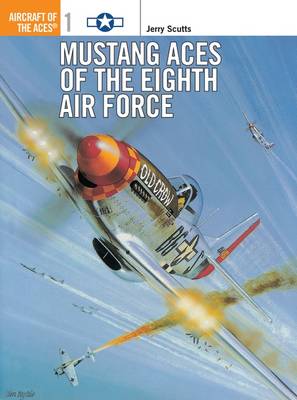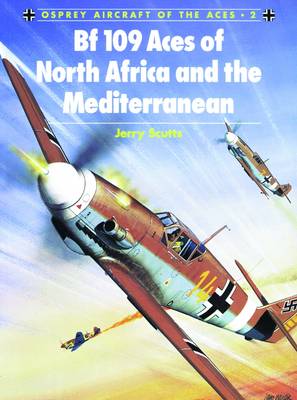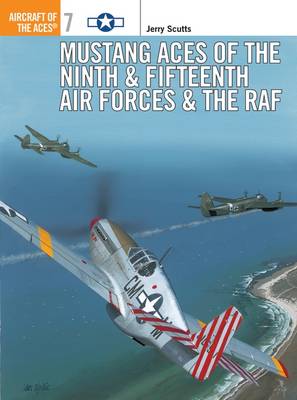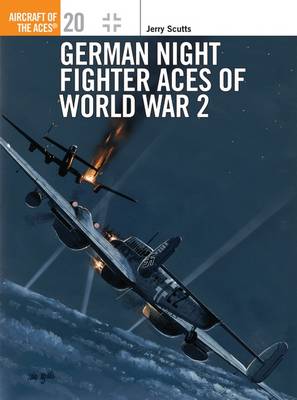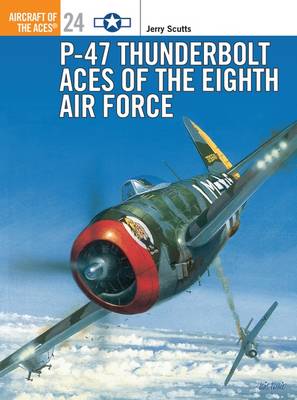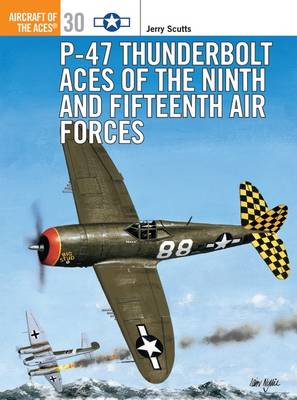Osprey Aircraft of the Aces S.
6 primary works
Book 1
Combining the power of the Packard-Merlin with a beautifully-designed airframe, the P-51D Mustang was a class above most other piston-engined fighters in the war-torn skies of Germany in the last years of World War II. This book describes the design and production of the P-51D, and draws on first-hand accounts to chart its combat history in Europe, and to tell the stories of the aces who flew the fighter. It also includes colour illustrations and cutaways, as well as contemporary photographs.
Book 2
Equipped mainly with Messerschmitt's classic BF 109, the JG 27 elite Luftwaffe Unit wreaked havoc against RAF squadrons in the Middle East during the Afrika Korps campaign. This book describes the design and production of the BF 109, and draws on first-hand accounts to chart its combat history in North Africa, and to tell the stories of the aces who flew the fighter. It also includes new colour illustrations and cutaways, as well as contemporary photographs.
Book 7
Mustang Aces of the Ninth & Fifteenth Air Forces & the RAF
by Jerry Scutts
Published 13 November 1995
Although best remembered for its exploits with Eighth Air Force units, the Mustang, in its various marks, actually made its combat debut firstly with the RAF in the Army co-operation role, and then with the USAAF's tactically-optimised Ninth and Fifteenth Air Forces. Seeing action in Western Europe and the Mediterranean, pilots like Glenn T Eagleston, John J Voll and Samuel J Brown notched up impressive scores flying P-51Bs and Ds with the 354th, 31st and 52nd Fighter Groups. Rarely given the exposure enjoyed by their high-scoring brethren in the 'Mighty Eighth', this volume at last sets the record straight on Europe's remaining Mustang aces.
Book 20
Germany's nightfighter force was virtually non-existent at the start of the war, mainly due to Reichmashall Herman Goring's boast that bombs would never fall on Germany. By mid 1940 the folly of this statement had been revealed and the first Luftwaffe nightfighter wing was formed. Their effectiveness was greatly enhanced by the creation of a radar chain stretching from Denmark to Switzerland. By 1942 the Luftwaffe was equiped with some 389 fighters fitted with advanced airbourne radar which helped to destroy hundreds of RAF bombers. This detailed text explains the conflict and tactics flown and includes interviews with some of the leading aces. Scale drawings of the all the major nightfighters used are presented, including the Bf110, Ju88, Do 17/217 and Hs 219.
Book 24
The US aviation industry produced three great fighter designs to equip its burgeoning army air force during World War 2, and of this trio, Republic's P-47 Thunderbolt was easily the heaviest. Powered, crucially, by a turbocharged Pratt & Whitney R-2800 Double Wasp radial engine that produced 2000 hp, the first production fighters reached the 56th FG in June 1942, and six months later the group joined the Eight Air Force in Britain. The arrival of the first P-47Cs in mid-1943 addressed the problem of the aircraft's short combat radius, as this model could be fitted with an external tank. Slowly, as combat tactics evolved in units like the 56th and 78th FGs, pilots learnt how best to fly the Thunderbolt in order to effectively counter the more nimble Luftwaffe fighters. Aircraft of the Aces 1, 19 and 24 are also available in a single volume as 'Aces of the Mighty Eighth'.
Book 30
P-47 Thunderbolt Aces of the Ninth and Fifteenth Air Forces
by Jerry Scutts
Published 1 December 1999
This book charts the story of the lesser known aces who flew the mighty Republic aircraft as a tactical fighter-bomber with the Ninth Air Force, rather than as a long-range escort. It also details the exploits of the Mediterranean-based 325th FG, which was the only P-47 group within the strategic Fifteenth Air Force. Thunderbolt aces within the Ninth Air Force, particularly, were rare, despite some 15 groups flying the fighter. Supporting troops on the ground rather than searching out aerial foes, was the name of the game for the men of the Ninth. However, with the Luftwaffe often opposing such sorties through to April 1945, more than 20 pilots had the opportunity to score five or more kills and 'make ace'.
